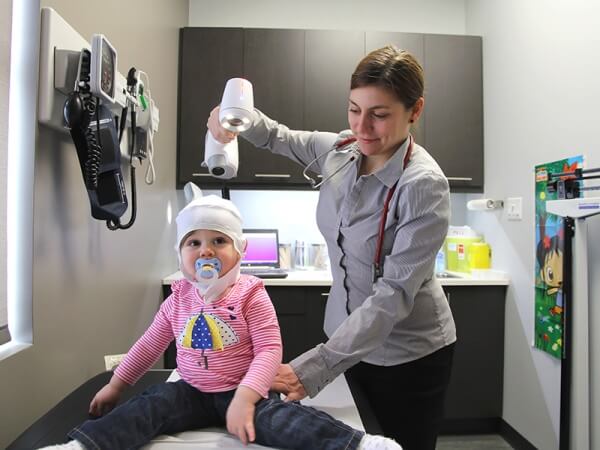 |
| Tech scans the cranium of a child – Image credit Sculpteo |
Much less attention has been paid 3D scanners, which are being developed in conjunction with 3D printing. Currently being developed and experimented in academic research institutions, 3D scanning tools may soon make their way into hospitals, clinics and even doctors’ offices.
According to online magazine Interesting Engineering 3D scanners use specialized software that directs a set of laser probes above the surface of an object. Sensor cameras continuously record the changing distance and shape of the laser in three dimensions as it sweeps along the object.
Current applications of the technology are limited to 3D measurements and include cranial mapping, surgical modeling, prosthetics and orthotics, and dental implants. 3D scanners are able to quickly and accurately obtain the dimensions of a limb, thus producing the measurements to custom fit a prosthetic device. In dentistry 3D scanning is used to produce aligners, implants, dentures and crowns with near perfect fit.
Combining 3D scanning with 3D printing is expected to provide the efficiency and time saving to significantly advance the commercialization of 3D printed medical products.
Sources: Sculpteo The medical applications of 3D scanning: what is possible
Interesting Engineering: How do 3D scanners work.

No comments:
Post a Comment